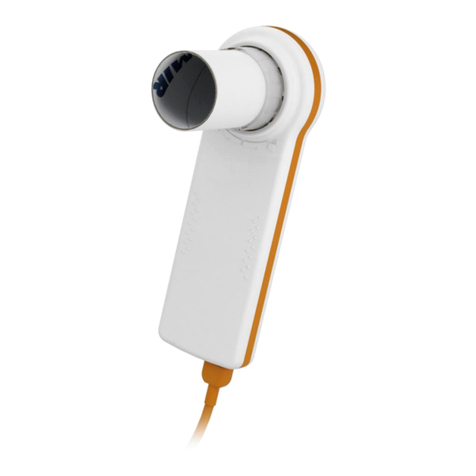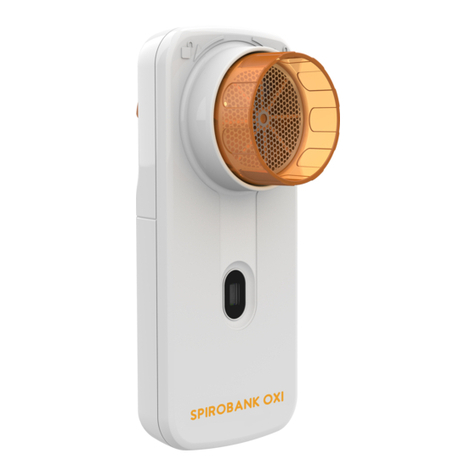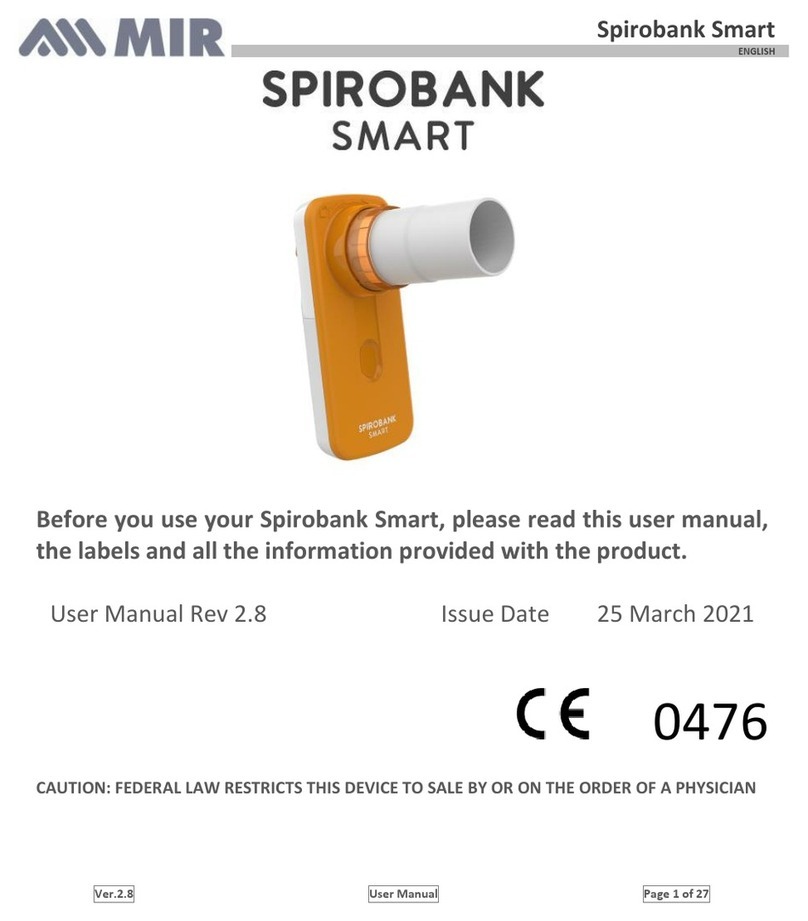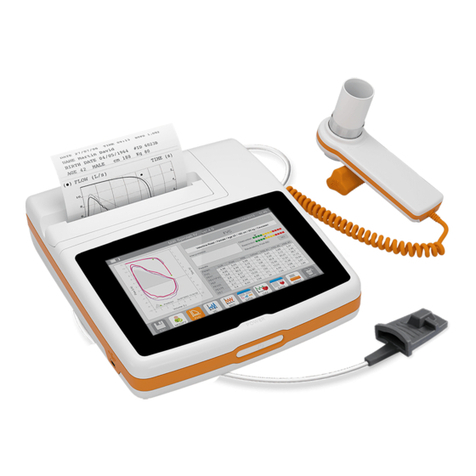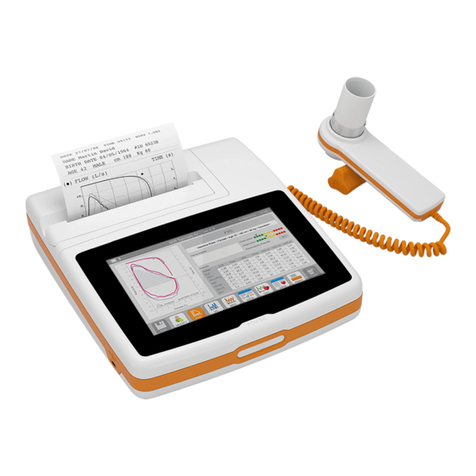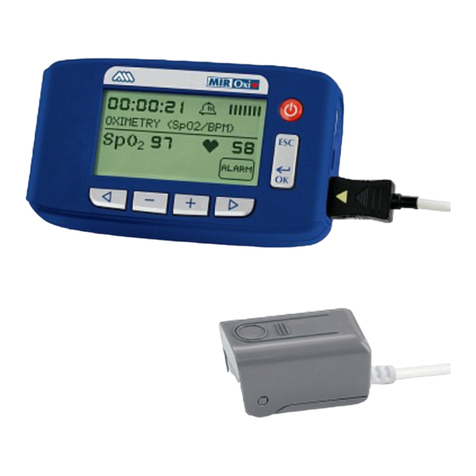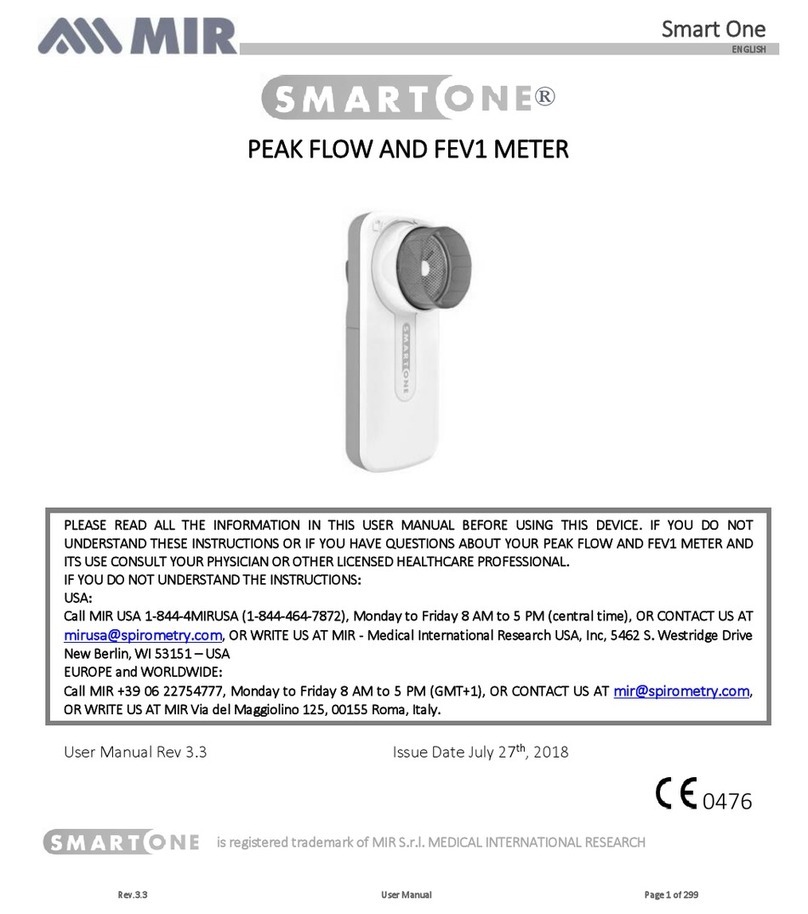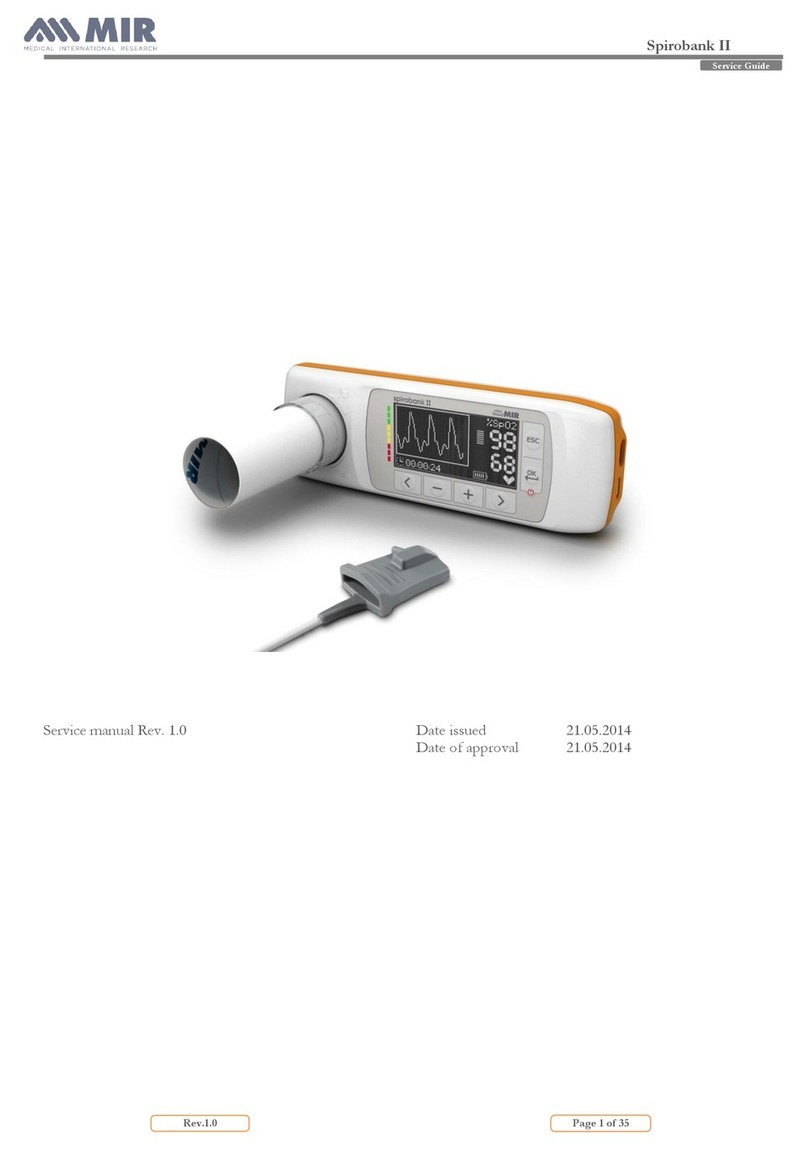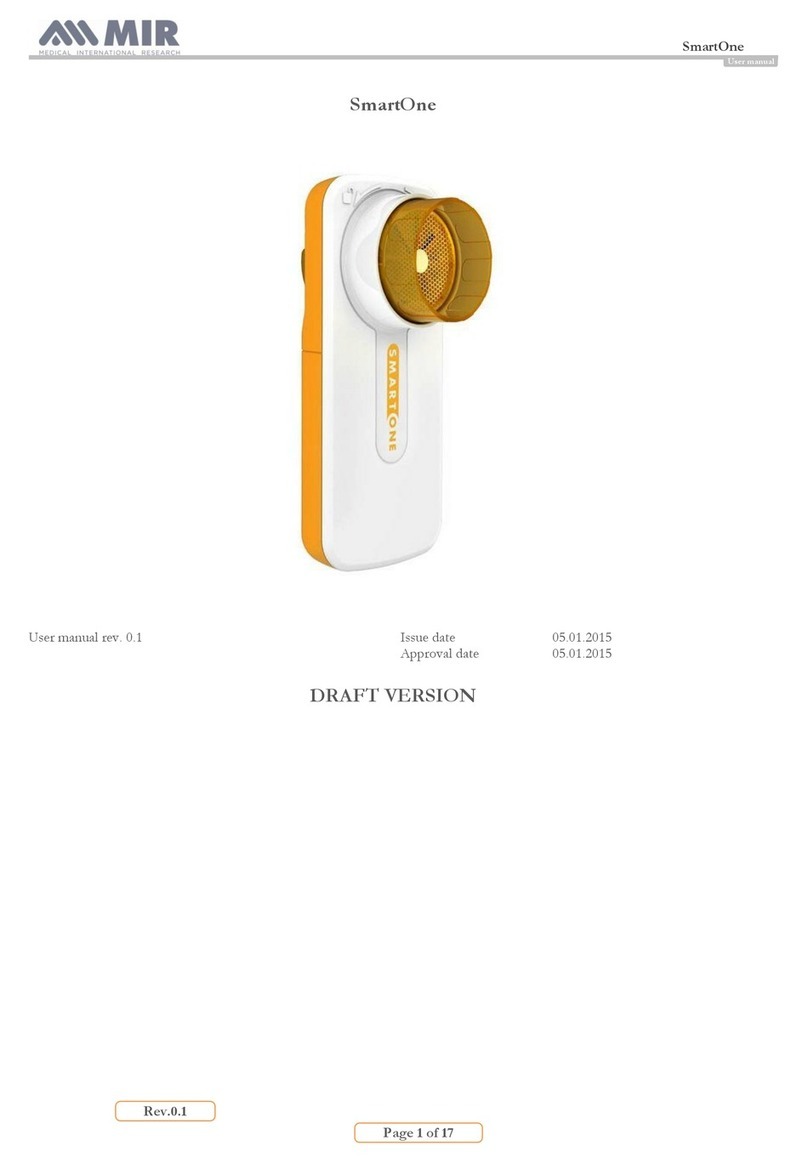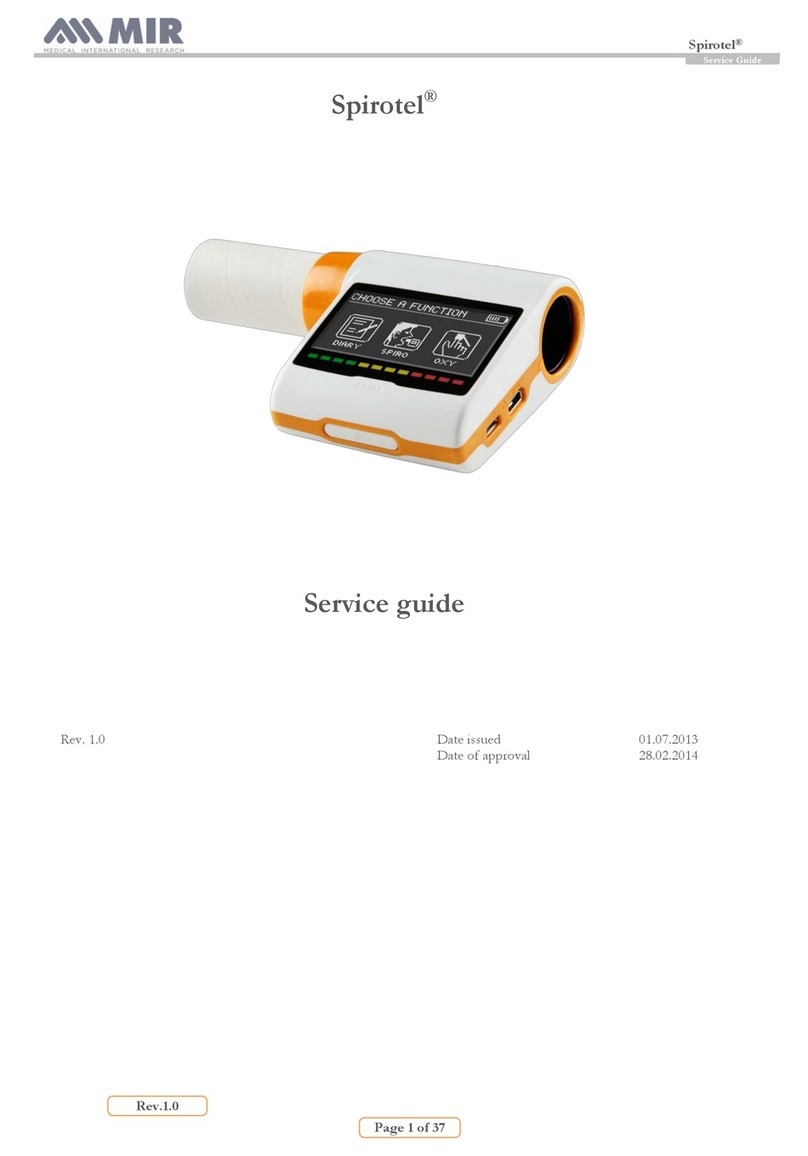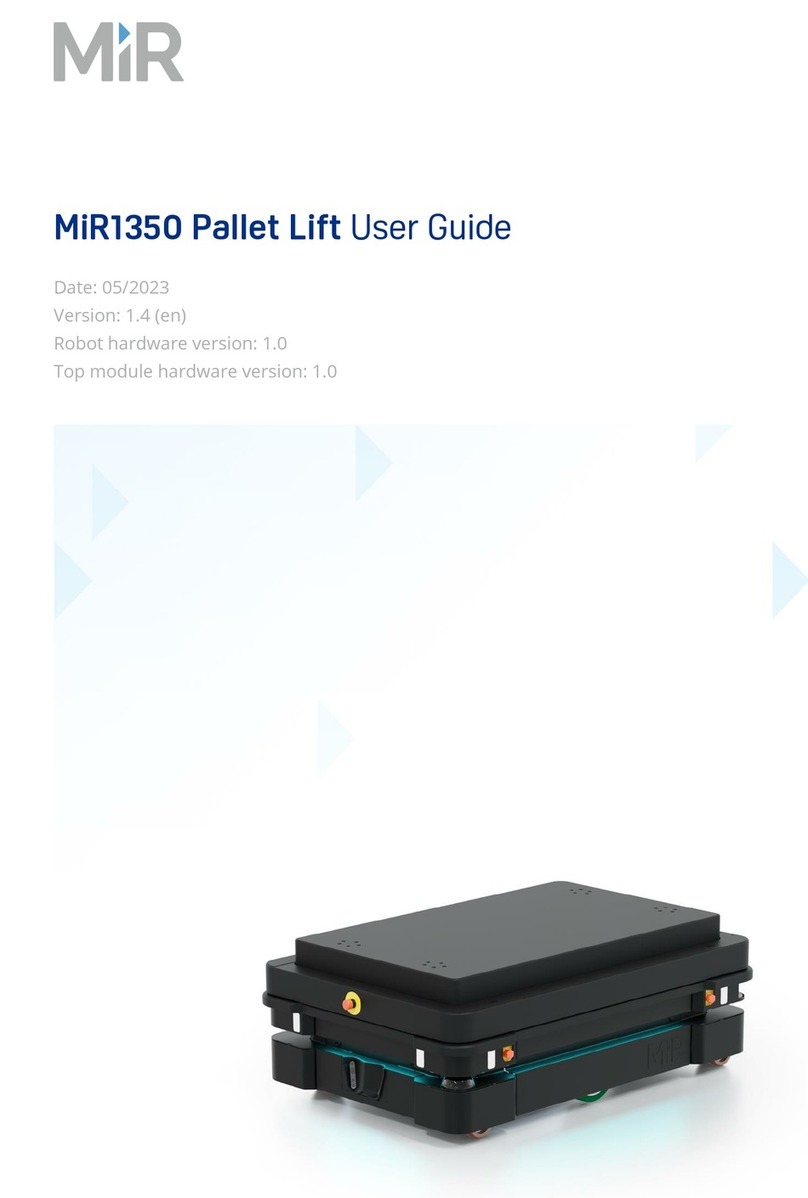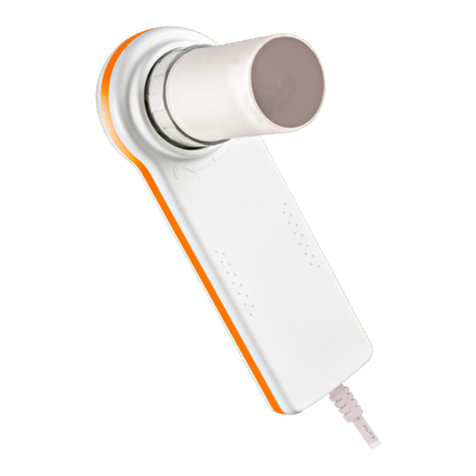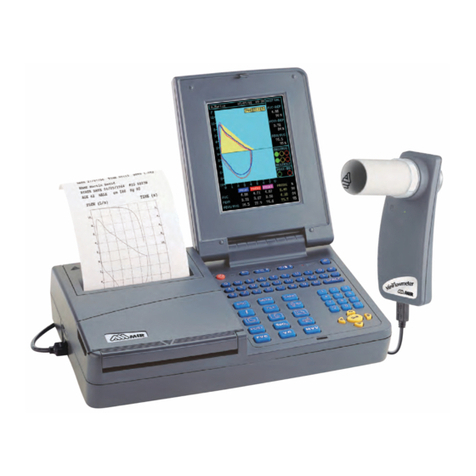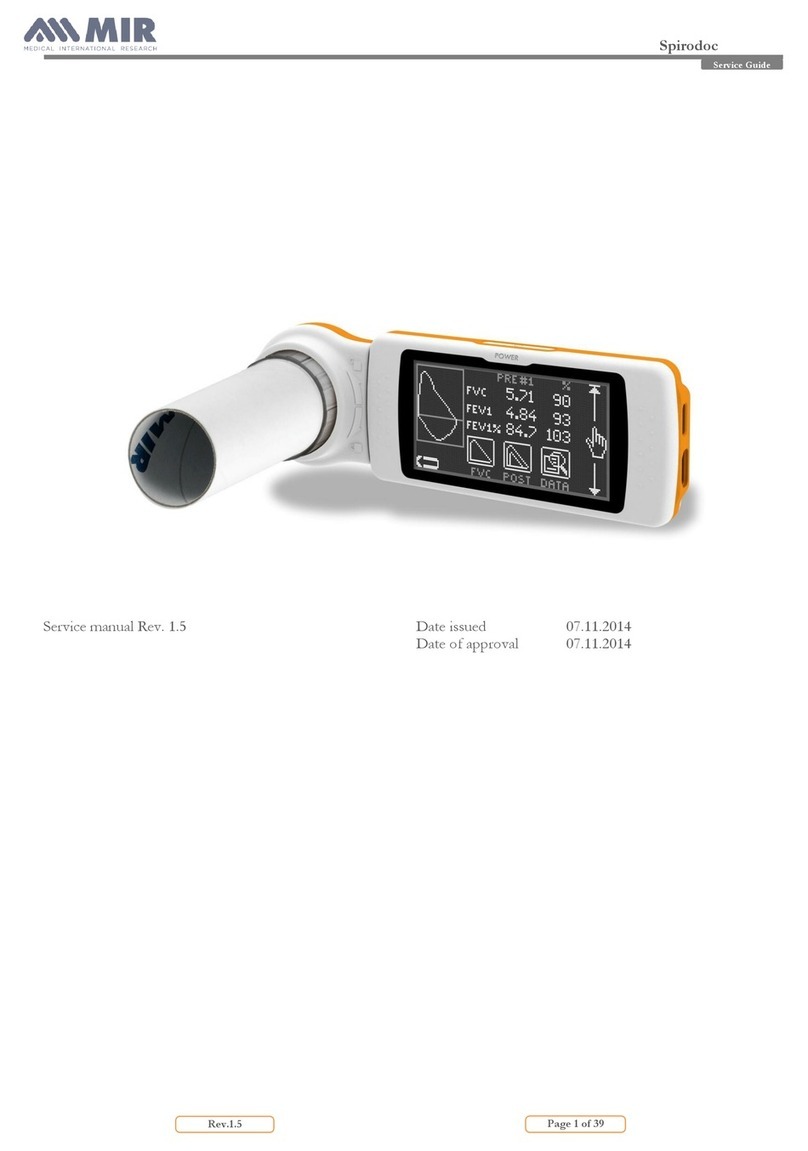
Spirodoc cod. 980156 Rev 1.3 EN 1/67
Spirodoc
User Manual Rev. 1.3
Issued on 27/04/2010
Approved on 27/04/2010
INDEX
1. EQUIPMENT AND ACCESORY LIST................................................................3
2. INTRODUction ...................................................................................................4
2.1 Intended use................................................................................................4
2.1.1 User category..........................................................................................5
2.1.2 Ability and experience required...............................................................5
2.1.3 Operating Environment ...........................................................................5
2.1.4 Who can or must make the installation....................................................6
2.1.5 Patient effect on the use of the device ....................................................6
2.1.6 Limitations of use - Contraindications......................................................6
2.2 Important safety warnings............................................................................6
2.2.1 Danger of cross-contamination ...............................................................7
2.2.2 Turbine....................................................................................................7
2.2.3 Mouthpiece..............................................................................................8
2.2.4 I Oximetry sensor....................................................................................8
2.2.5 Device...................................................................................................10
2.3 Unforeseen errors...................................................................................... 11
2.4 Lithium-ion battery pack warning............................................................... 11
2.5 Labels and symbols................................................................................... 14
2.5.1 Identification label..................................................................................14
2.5.2 CE mark for medical devices................................................................. 14
2.5.3 Electrical safety symbol.........................................................................14
2.5.4 Warning symbol for the RS232 serial port............................................. 14
2.5.5 Warning symbol for the USB serial port ................................................14
2.5.6 Warning symbol for the SpO2 port for oximetry ....................................15
2.5.7 Warning symbol for the WEEE.............................................................. 15
2.5.8 FDA and FCC Warnings........................................................................15
2.5.9 Product description................................................................................ 16
2.6 Technical specifications.............................................................................18
2.6.1 Features of the spirometer....................................................................18
2.6.2 Oximeter features..................................................................................19
2.6.3 Other features .......................................................................................23
3. Functioning of the SPIRODOC.......................................................................... 23
3.1 Display.......................................................................................................23
3.2 Accensione e spegnimento di SPIRODOC................................................24
3.3 Symbols and Icons .................................................................................... 24
3.4 Energy saving............................................................................................25
3.5 Information................................................................................................. 25
3.6 Service menu.............................................................................................26
3.6.1 Patient Mode......................................................................................... 31
3.6.2 Reusable turbine calibration.................................................................. 32
3.7 Patient Data............................................................................................... 34
3.7.1 Inserting data of a new patient..............................................................34

